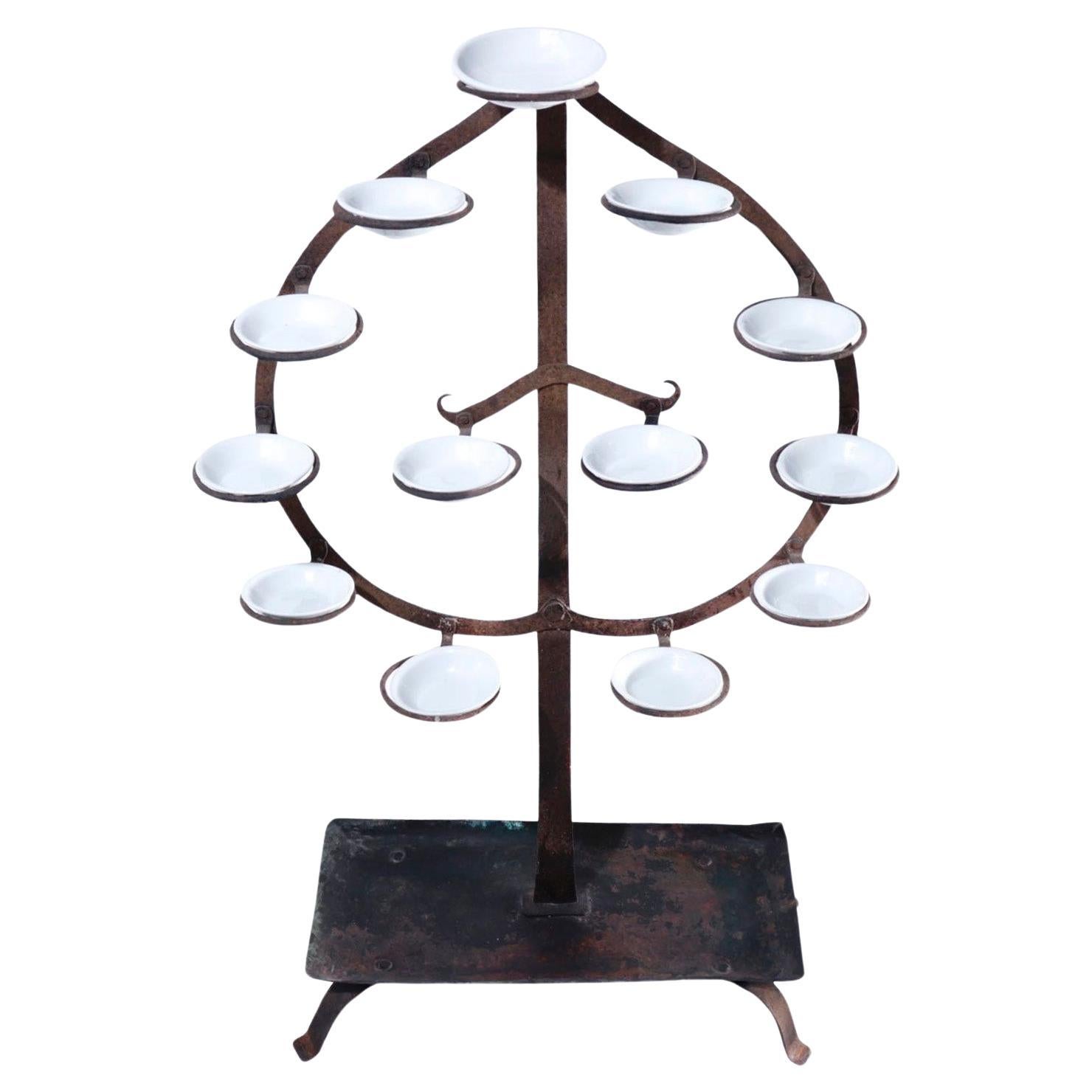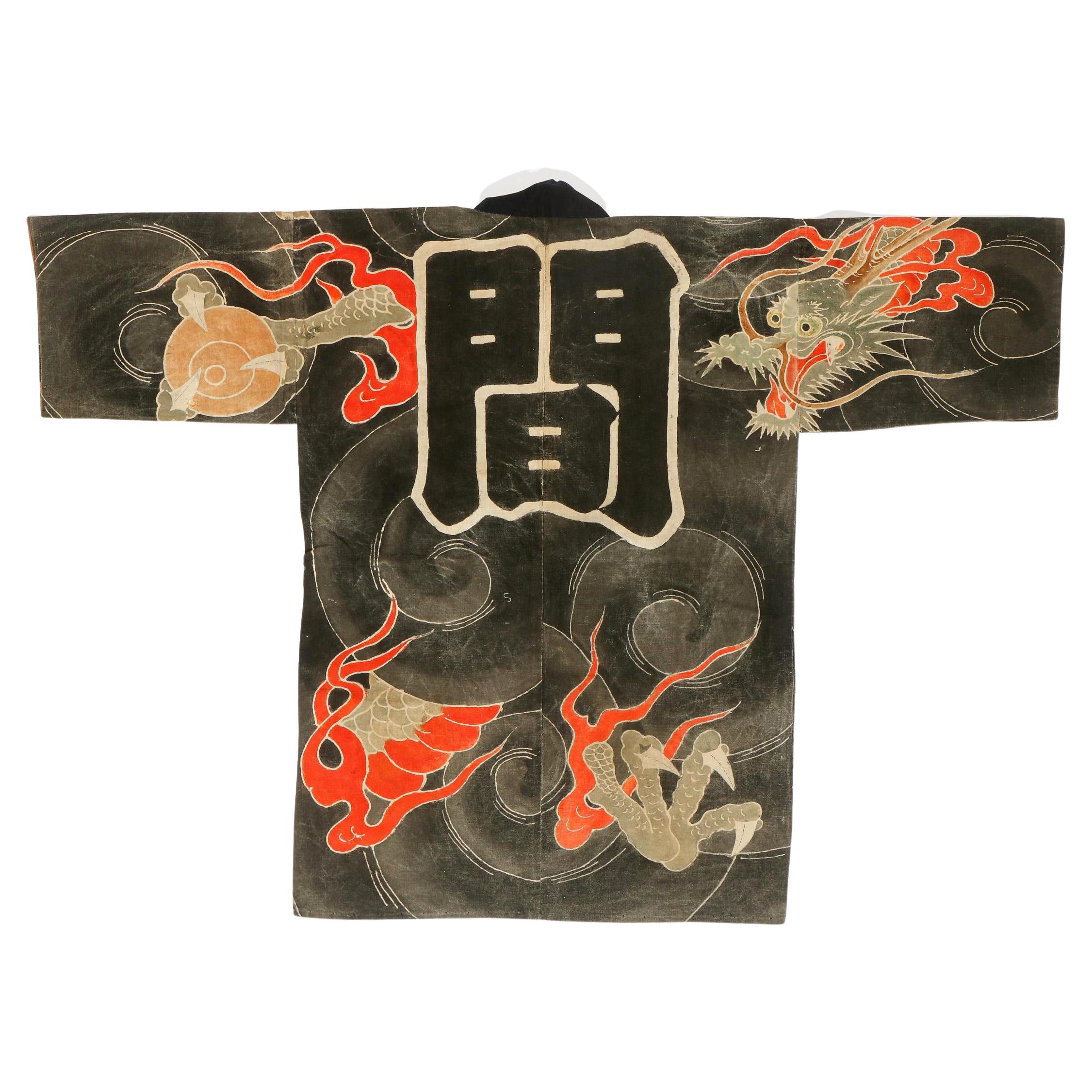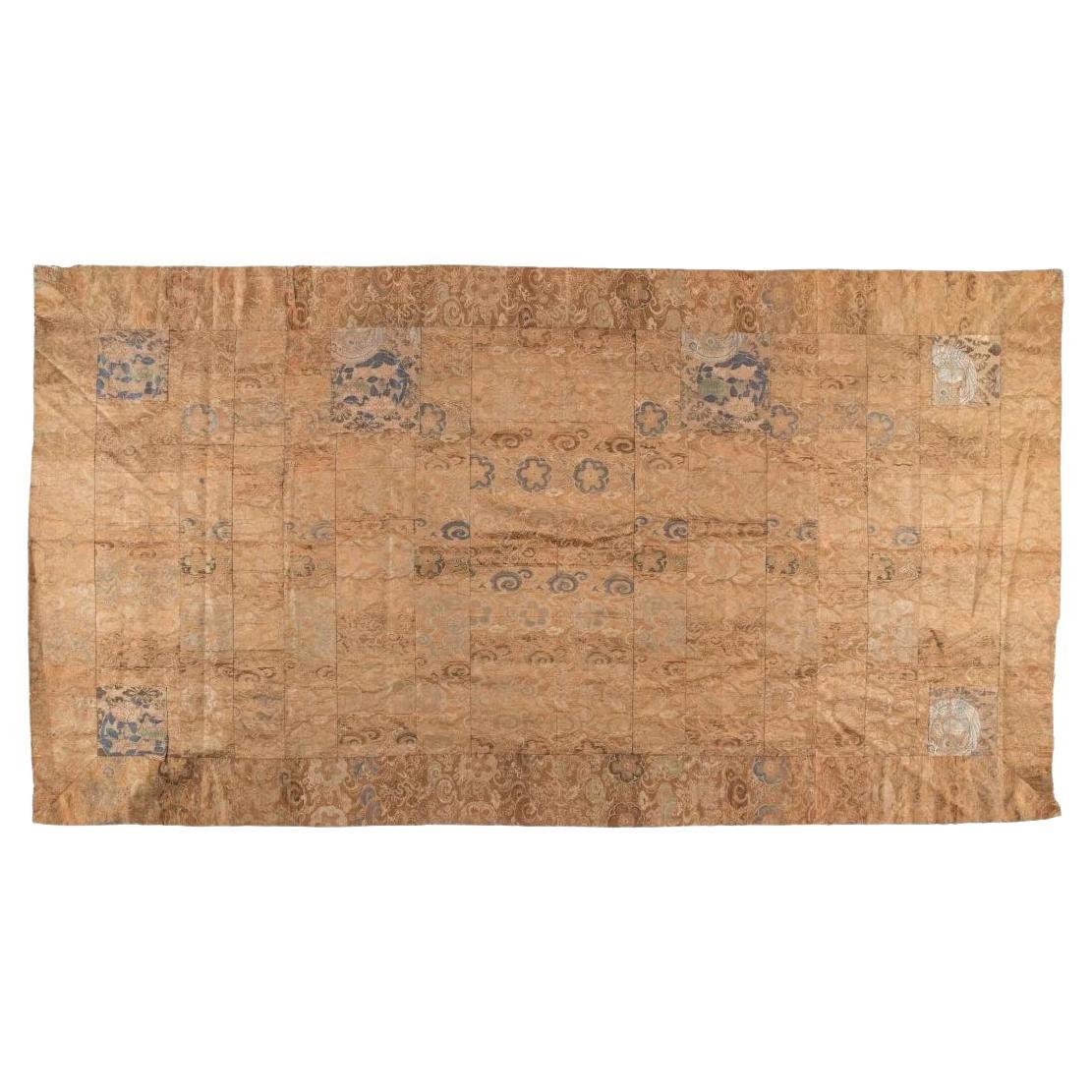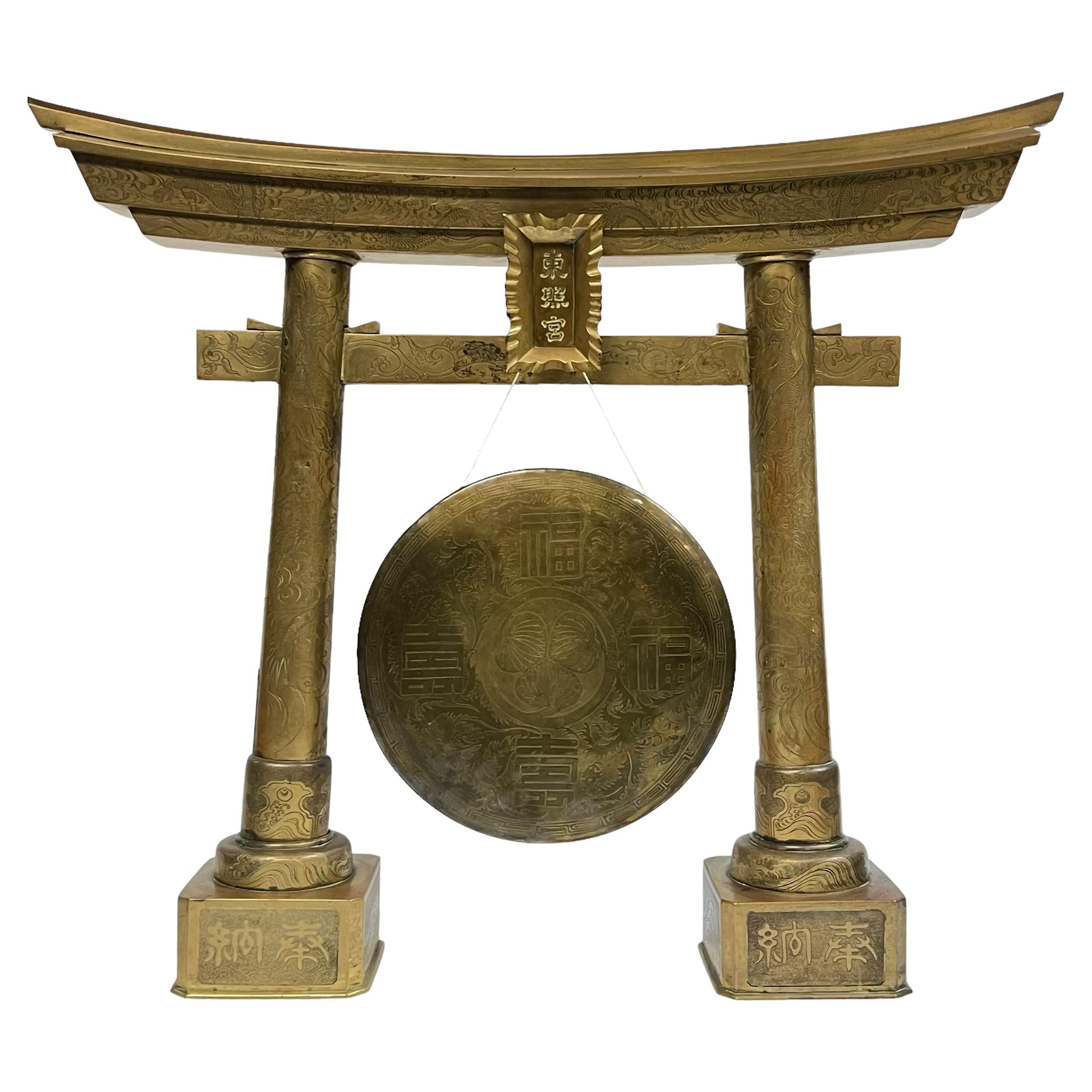Items Similar to Edo Period Chain Mail Armor Jacket, Kusari or Karuta, Japan
Want more images or videos?
Request additional images or videos from the seller
1 of 7
Edo Period Chain Mail Armor Jacket, Kusari or Karuta, Japan
About the Item
Edo period Chain Mail Armor Jacket, Kusari or sometimes known as Karuta, Japan
Japanese chain mail armor jacket is composed of brass metal plates linked together with metal wires and sewn onto cotton indigo fabric. The metal plates are shaped like the Karuta game cards, hence sometimes it's referred to as Karuta. This particular jacket was probably worn by a foot soldier.
- Dimensions:Height: 26 in (66.04 cm)Width: 18 in (45.72 cm)Depth: 1 in (2.54 cm)
- Style:Edo (Of the Period)
- Materials and Techniques:
- Place of Origin:
- Period:
- Date of Manufacture:Late 18th Century
- Condition:Wear consistent with age and use. Minor losses. Some losses in the integrity of the links, overall condition is good.
- Seller Location:Point Richmond, CA
- Reference Number:
About the Seller
4.9
Platinum Seller
These expertly vetted sellers are 1stDibs' most experienced sellers and are rated highest by our customers.
Established in 1999
1stDibs seller since 2015
607 sales on 1stDibs
Typical response time: 2 hours
- ShippingRetrieving quote...Ships From: Point Richmond, CA
- Return PolicyA return for this item may be initiated within 3 days of delivery.
More From This SellerView All
- Antique Japanese Tomyodai, Edo periodLocated in Point Richmond, CAJapanese Tomyodai, a temple light stand created of iron and copper in the upright form of the Tama (Buddhist flaming jewel) with 13 ringlet projections to...Category
Antique Mid-19th Century Japanese Edo Metalwork
MaterialsCopper, Iron
- Late Meiji Period Sleeping Kimono / Yogi, JapanLocated in Point Richmond, CALate Meiji Period sleeping Kimono / Yogi, Japan Yogi are a type of oversized sleeping kimono traditionally used in Japan. This kimono would have b...Category
Early 20th Century Japanese Tribal Textiles
MaterialsCotton
- Meiji Period Japanese Indigo Double Ikat Futon CoverLocated in Point Richmond, CAMeiji period Japanese Indigo double ikat futon cover Japanese futon cover, a double ikat pattern in four panels depicting Kumamoto Castle with im...Category
Antique 1890s Japanese Meiji Textiles
MaterialsCotton
- Saki-Ori Farmers Coat, Northern Japan, Meiji PeriodLocated in Point Richmond, CASaki-ori farmers coat, Northern Japan, Meiji period A very heavy and substantial saki-ori coat, made of cotton with an indigo kasuri lapel. Several patches of hand sewn stitching ...Category
20th Century Japanese Meiji Textiles
MaterialsCotton
- Japanese Head Bucket (Kubi-Oke), Lacquer, Meiji PeriodLocated in Point Richmond, CAJapanese Head Bucket (Kubi-Oke), Lacquer, Meiji period. The head bucket was used for storing and transporting severed heads. During the Samurai era clashes and battles ensued, cutt...Category
Early 20th Century Japanese Meiji Metalwork
MaterialsWood, Lacquer
- Japanese Horse Trapping, "Uma-No-Haragake", Tsutsugaki, Cotton, Meiji PeriodLocated in Point Richmond, CAJapanese horse trapping, "Uma-No-Haragake", Tsutsugaki, cotton, Meiji period This type of haragake is called yuiage ("tied up"). The central portion covered the belly of the horse an...Category
20th Century Japanese Meiji Textiles
MaterialsCotton
You May Also Like
- Antique Japanese Shirushi-Banten Fireman Jacket Edo PeriodLocated in Atlanta, GAA Japanese Shirushi-Banten (Fireman's Coat) circa 19th century of Edo Period. The robe was made from a heavy cotton fiber and decorated with a dramatic dragon in the dark cloud scheme using Tsutsugaki, a free-hand resist dye method. A dragon with claws clenching pearls and red-orange fire motifs was artistically depicted slithering in and out of dark swirling clouds from the front to the back of the robe. The spatial composition was superb as well as the stylized motion. The indigo blue colored neck lapel bears scription indicating the location of where the robe belonged: the Kannon-Ji of Magino District (The Temple of Kannon; In Japan, the goddess of mercy Guanyin was known as Kannon). This temple is located in Higashine City of Yamagata Prefecture in Northern Japan. On the back, there is a large Kanji Character "Space" in the center, matching the first symbol of the location "Magino" in the front. It is likely that instead of a functional fire-fighting gear, the robe was used in festival parade by firemen, perhaps sponsored by the temple for the town event. When fully extended as shown in photo 1 and 2, it measures 50" W x 37" H. A beautiful and well-preserved sample of Japanese textile art.Category
Antique 19th Century Japanese Japonisme Textiles
MaterialsTextile
- Suit of Red Lacquer Japanese Fighting Armor of the Late Edo PeriodLocated in San Francisco, CASuit of red lacquer Japanese fighting armour of the late Edo period, (1716-1868). Desirable coral red lacquer is original and unrestored. Composed of a helmet, (Kabuto) breast plate (Do) and shoulder, arm protection (chainmail). Displayed with a later recreation expressive face plate of modern manufacture (nose, mustache). Also displayed with (photos 3 & 4) a period red lacquer partial face plate (Hambo) with replacement throat guards. All of the assembled parts are of same age, quality and color. Old silk and linen sleeve and helmet linings decayed or shredding. The Meiji period wood...Category
Antique 19th Century Japanese Metalwork
MaterialsIron
- Japanese Samurai Helmet Kabuto Edo Period (1603-1867)Located in Hampstead, QCA Japanese Samurai black-lacquered helmet (kabuto) in suji bachi style and of a goshozan shape consisting of the: - main dome (hachi) made from 16 plates in natural iron riveted to...Category
Antique Early 19th Century Japanese Edo Metalwork
MaterialsIron
- Antique Japanese Brocade Kesa Monk's Robe Edo PeriodLocated in Atlanta, GAA Japanese Kesa (Monk's Vestment) made from thirteen columns of patchworks of shimmering woven brocades. The elaborate motifs feature repetitive hibiscus flowers within framework of ...Category
Antique 19th Century Japanese Edo Textiles
MaterialsBrocade, Silk
- 19th Century Japanese Edo Period Bronze GongLocated in New York, NYUnique and impressive 19th century Japanese Toshogu shrine gong honoring Tokugawa leyasu, founder of the Tokugawa Shogunate that ruled from 1603 to 1867, known as the Edo period. Wi...Category
Antique Mid-19th Century Japanese Edo Metalwork
MaterialsBrass, Bronze
- Japanese Spear, Edo Period, SignedLocated in Stockholm, SEA Japanese long spear. Partly lacquered wood with a forged spearhead which is signed. High quality as most of Japanese items. Provenance: early 20th century Swedish collection.Category
Antique 19th Century Japanese Metalwork
MaterialsIron
Recently Viewed
View AllMore Ways To Browse
Japanese Japan
Antique Brass Metal
Antique Metal Plates
Japanese Cotton
Edo Japan
Antique Brass Chains
Antique Brass Chain
Edo Period Furniture
Edo Period Japan
Textile Art Japan
Japanese Textile Art
Antique Fabric Fabric Textiles
Antique Fabric Textiles
Antique Textiles Fabric Textiles
Antique Fabrics And Textiles Fabric Textiles
18th Century Textiles
Antique Mail
Chain Link Furniture





